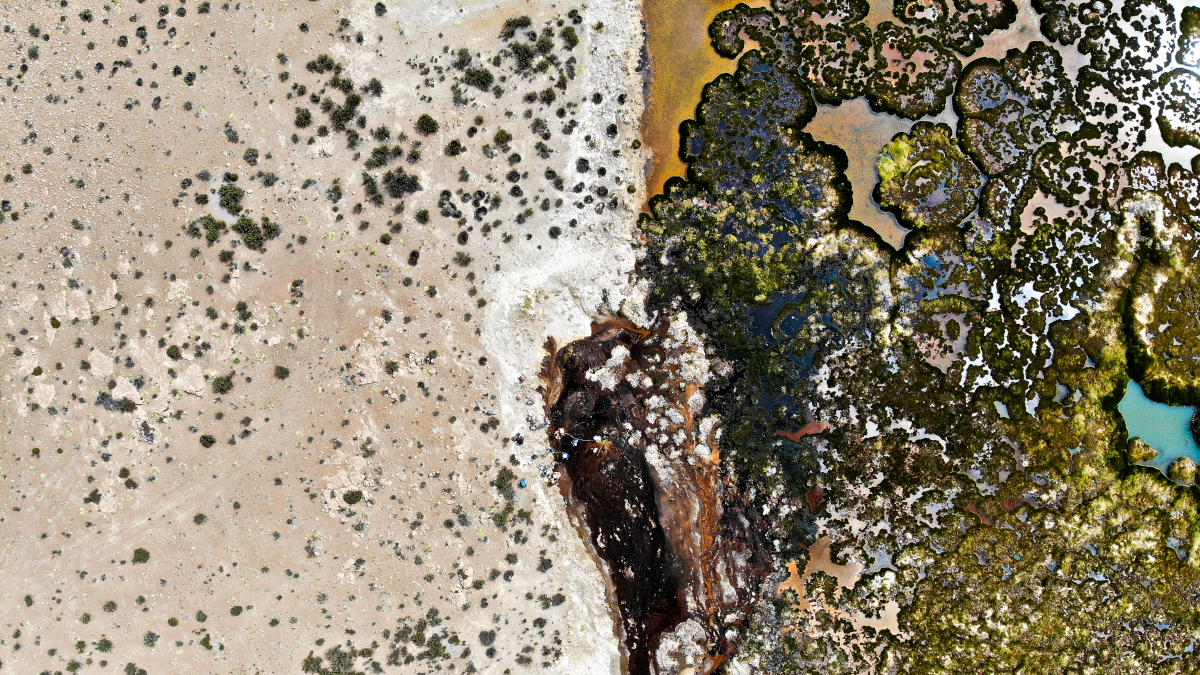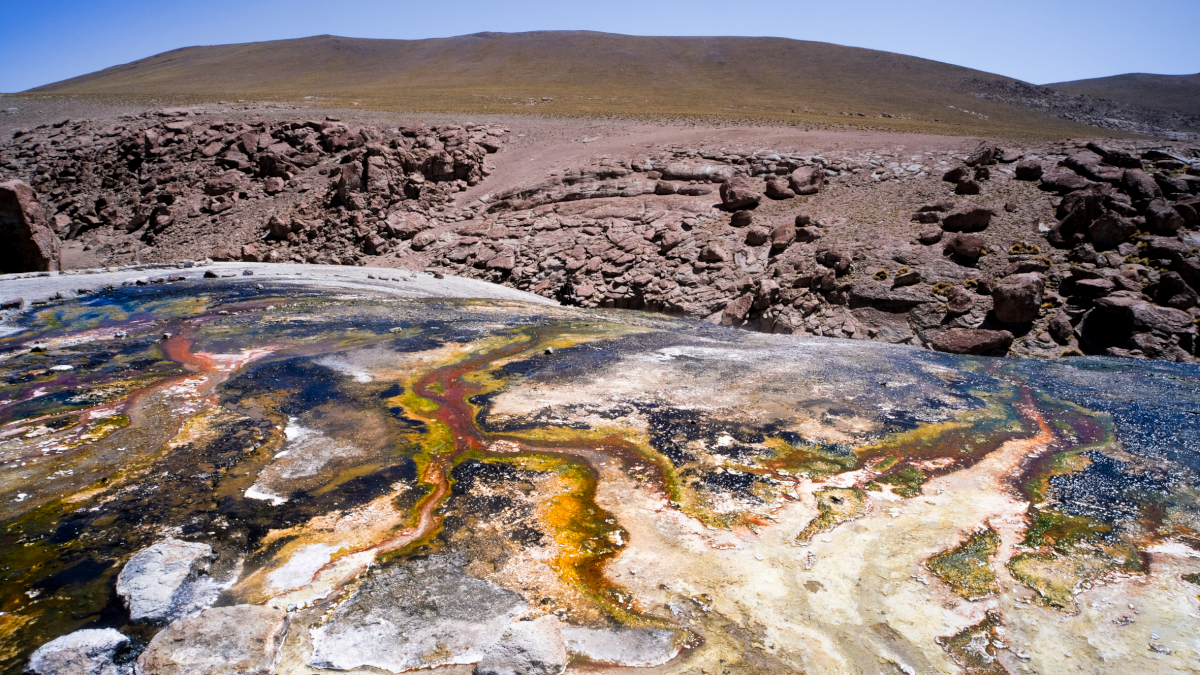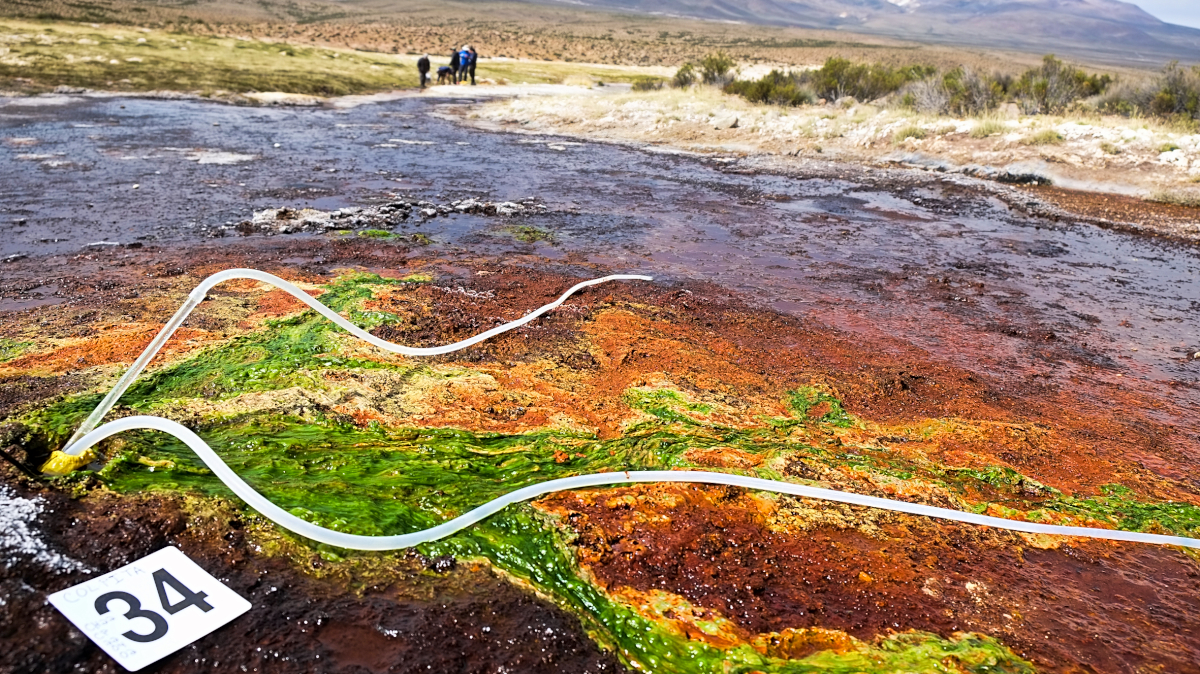2 min to read
Extreme life, extreme colours
The amazing colours of microbial life

If we were to paint a forest, we would probably know exactly what colours to choose, a bright green and a deep brown. If we were to draw a seascape, we would choose an intense blue. But when we see such a diversity of colours around a water source, we are mesmerized but confused. However, to scientists, these colours tell about an incredible diversity of life.
One example is Grand Prismatic Spring, in Yellowstone National Park, so named in 1871 during the Hayden Expedition by Ferdinand Hayden, who affirmed that no work of art created by Man could ever compete with the colours of the spring. The colours that so fascinated the U.S. geologist are the result of a microbial mat that finds comfort in the warm body of water and changes colouration according to the ratio of chlorophyll to carotenoids and according to the temperature gradient, turning orange in summer and green in winter.

This microbial mat is embroidered respecting the laws of nature. Each microorganism lives and survives in a portion of space due to its characteristics and peculiarities that make it able to populate a particular place. In a single spring, it is possible to discover a multitude of colours resulting from the variation of temperature, pH, and salinity. The colours therefore stratify, order themselves and create wonderful puzzles where everything seems to fit together perfectly and in harmony.
Despite the high microbial diversity, the undisputed protagonists of the garish colours are undoubtedly phototrophic organisms: Cyanobacteria and anoxygenic phototrophic bacteria, capable of performing CO2 and N2 fixation (the transformation of an inorganic compound into an organic one) and contributing significantly to the overall nitrogen balance. Cyanobacteria and a wide array of anoxygenic phototrophs are among the most adapted organisms to live at the interface between extreme environments and neighbouring ecosystems: they can thrive in hypersaline and alkaline lakes, withstand high concentrations of metals, and tolerate xerophilic conditions.

Along with cyanobacteria, other microorganisms share the same ‘passion for painting’. Numerous bacteria exploit the sulphur, iron, oxygen, manganese and other compounds present in varying quantities in places with extreme conditions, generating warm or cold colours.
In this photo, taken by Jacopo Pasotti, for example, the colours belong to the Alitar Verde sampling site, one of the stops on the Chile 2022 expedition. It is located at 4755 m above sea level and consists of a series of springs located downstream of the Alitar volcano. Green and white are the real protagonists and recall the marshy nature of the area and the presence of biofilms (an aggregation of bacteria taking root on a substrate) and algae.
Thus, extreme conditions provide the substrate for the proliferation of an enormous microbial diversity reflected in the myriad facets of colours that fascinate and reveal hidden worlds.

